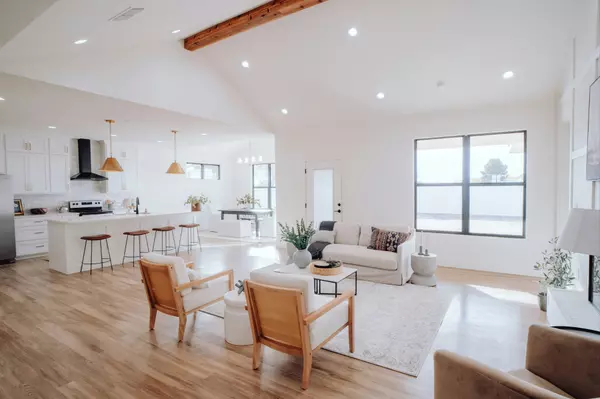The Rise of Remote Work: How It’s Shaping Real Estate Trends
by James Acierno

The COVID-19 pandemic triggered a seismic shift in how people work, and one of its most lasting impacts has been the widespread adoption of remote work. What began as a temporary solution to maintain business continuity during lockdowns has now evolved into a permanent fixture of the modern workforce. As a result, remote work is reshaping the real estate market in profound ways. From a surge in suburban living to a growing demand for home office spaces, the preferences of homebuyers and renters have changed dramatically.
The Shift to Suburban Living
One of the most noticeable trends influenced by remote work is the movement away from urban centers and into suburban and rural areas. Prior to the pandemic, many professionals opted to live in cities to minimize their commutes and enjoy the conveniences of urban life. However, with commutes now a non-factor for remote workers, people are prioritizing space, affordability, and quality of life.
According to a survey conducted by the National Association of Realtors (NAR), the demand for homes in suburban and rural markets has seen a marked increase, with nearly half of homebuyers seeking properties in the suburbs. The ability to work from anywhere has allowed people to leave high-cost cities in favor of more spacious, affordable homes in less densely populated areas.
I believe that suburban living offers a better value proposition for families and individuals who no longer need to be close to their offices. The rise of remote work has accelerated demand in neighborhoods that offer larger homes, good schools, and access to nature, yet are still within a reasonable distance from major metropolitan areas.
The Growing Demand for Home Office Spaces
As the lines between work and home have blurred, homebuyers and renters are prioritizing features that support their remote work lifestyle. Chief among these is the need for dedicated office space. In fact, a home office has become one of the most desirable features in real estate listings. According to Zillow, listings that mention a home office or similar workspace have sold faster and often at a premium compared to those without.
For many professionals, a home office is no longer a luxury—it’s a necessity. People are looking for spaces where they can work efficiently without distractions, which has led to an increase in demand for properties with extra rooms, finished basements, or detached structures like backyard offices.
“Buyers are not just looking for a quiet corner to set up their laptop; they want functional, well-designed spaces where they can be productive,” says real estate agent Sarah Martinez, who specializes in suburban and rural properties. “We’re seeing more interest in homes with built-in office setups or the potential to create one, as well as a demand for properties that offer a mix of indoor and outdoor space where people can take breaks and enjoy their surroundings.”
Emerging Neighborhoods and Property Types
Remote work has also changed the types of neighborhoods and properties that are gaining popularity. Suburban and exurban areas that were once considered too far from major employment hubs are now booming, as buyers realize they can work from anywhere. Communities that offer a mix of affordability, outdoor activities, and access to essential services are becoming the new hot spots.
In addition to traditional single-family homes, there’s a rising interest in multi-generational homes, townhouses, and properties with land that can accommodate flexible living arrangements. With more people looking to stay home for both work and leisure, homes that provide versatile spaces are in high demand.
I would also point out that we’re seeing increased interest in communities that offer more than just a place to live. Homebuyers are looking for a lifestyle—walkable neighborhoods, nearby parks, and access to local amenities are becoming more important as people spend more time at home. The focus is on finding a home that supports both personal and professional life.
The Future of Real Estate in a Remote Work World
The shift to remote work has fundamentally altered the real estate landscape, and many of these changes are expected to be permanent. As more companies adopt flexible work policies, people will continue to seek homes that offer the space and amenities they need to live and work comfortably.
This new era in real estate presents exciting opportunities for both buyers and investors. Emerging neighborhoods, properties with office space potential, and homes in suburban and rural markets are all poised for growth. The real estate market is becoming increasingly dynamic, as the demand for more versatile living environments reflects the evolving needs of a remote workforce.
In conclusion, the rise of remote work is driving significant shifts in housing preferences, from the surge in suburban living to the need for dedicated home office spaces. As I have have highlighted, the market is evolving in response to these trends, with new opportunities emerging in previously overlooked areas. For homebuyers and investors alike, staying ahead of these trends will be key to capitalizing on the new landscape of real estate.
Categories
Recent Posts






